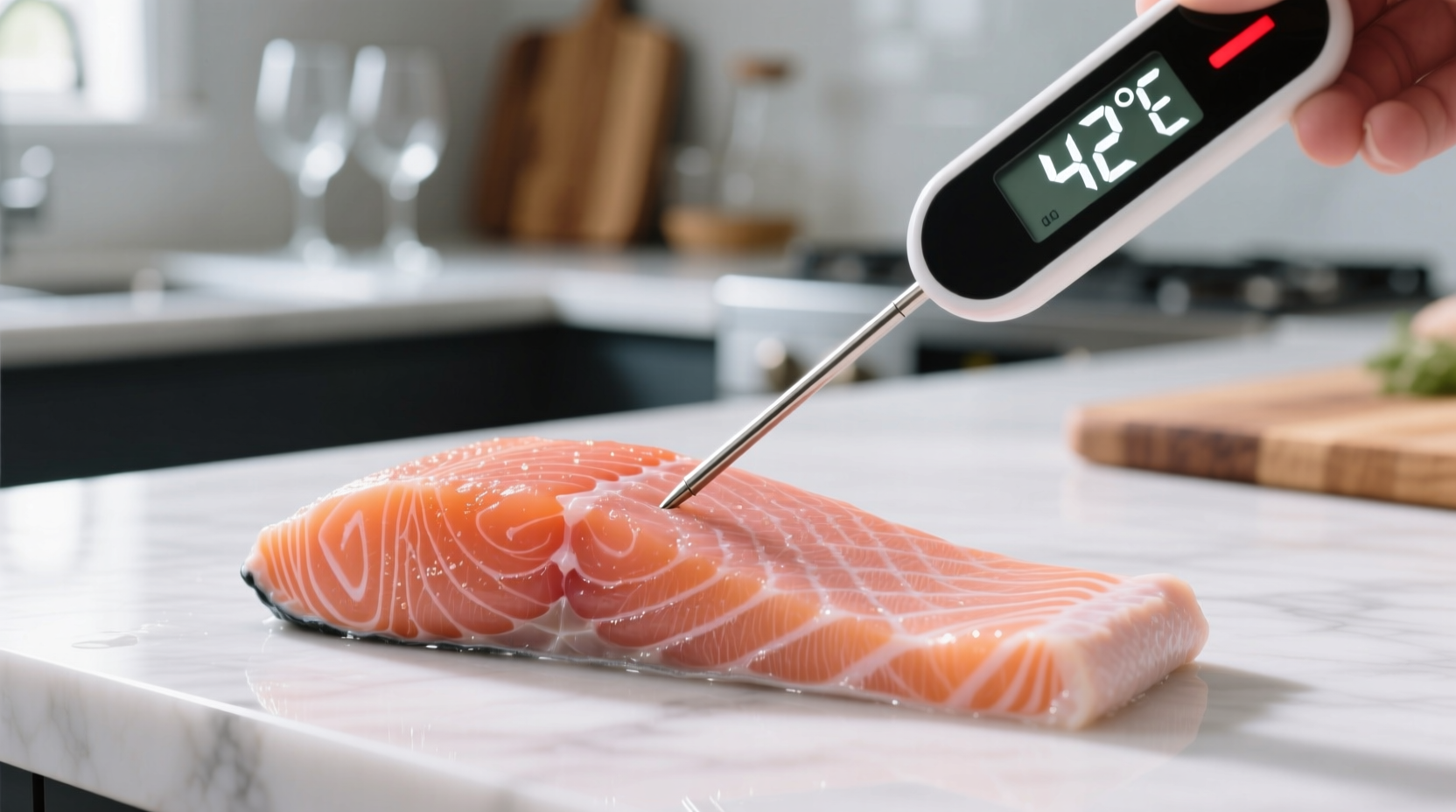The safe internal temperature for cooked fish is 145°F (63°C) as recommended by the USDA Food Safety and Inspection Service. At this temperature, fish becomes opaque, flakes easily with a fork, and is safe from harmful bacteria while maintaining optimal texture and moisture.
Getting fish temperature right separates a perfectly cooked fillet from a dry, overcooked disappointment or worse—a food safety risk. Whether you're grilling salmon on the weekend or preparing a weeknight tilapia dinner, understanding the precise thermal threshold for doneness ensures both safety and culinary success.
Why 145°F Is Your Fish's Perfect Finish Line
Fish proteins begin to denature around 110°F, but reaching the critical 145°F mark eliminates Salmonella, Vibrio, and other pathogens that cause foodborne illness. Unlike meat, fish cooks quickly and continues to rise in temperature after removal from heat (carryover cooking), making precise monitoring essential.
| Fish Type | Recommended Internal Temp | Visual Doneness Cues |
|---|---|---|
| Salmon, Tuna, Swordfish | 125°F-130°F (medium-rare) 145°F (well-done) |
Translucent center (rare) Opaque with slight give |
| Cod, Halibut, Haddock | 140°F-145°F | Flakes easily, milky white |
| Shrimp, Scallops | 120°F-125°F | Opaque with slight curl (shrimp) Pearly white, firm texture |
How to Measure Temperature Correctly
Insert an instant-read thermometer into the thickest part of the fish, avoiding bones which conduct heat differently. For whole fish, check the area behind the dorsal fin. Digital thermometers provide readings in 10-15 seconds—crucial since fish can overcook in minutes.
Pro Tip: Remove fish from heat at 140°F—it will continue cooking to 145°F during resting. This prevents the dry, chalky texture that occurs when fish exceeds 150°F.

When Rules Get Flexible: Context Boundaries
While 145°F is the USDA standard, some culinary traditions and fish types allow for lower temperatures:
- Fatty fish like salmon: Many chefs prefer 125°F–130°F for medium-rare, which maintains moisture while still being safe if sourced properly
- Sushi-grade fish: Must be frozen at -4°F for 7 days to kill parasites before raw consumption
- Pregnant individuals and immunocompromised: Should strictly follow the 145°F guideline according to FDA recommendations
The FDA Food Code confirms these standards, noting that visual cues alone aren't reliable for determining doneness across all fish varieties.
Avoid These Temperature Testing Mistakes
Common errors that lead to inaccurate readings:
- Using oven or grill temperature instead of internal fish temperature
- Measuring too close to the skin or bone
- Leaving thermometer in during cooking (causes heat conduction errors)
- Not calibrating your thermometer monthly (ice water test: should read 32°F)
Rescuing Common Cooking Disasters
Undercooked fish? Return to heat in 30-second increments until reaching target temperature. For delicate fish like sole, use a lower temperature to avoid breaking.
Overcooked fish? Try these fixes:
- Moisten with lemon-dill sauce or herb butter
- Flake into fish cakes with mashed potatoes and egg
- Use in chowder where texture matters less
Special Considerations for Different Cooking Methods
Grilling: Fish continues cooking rapidly off-heat—remove at 140°F. Use a thermometer with a thin probe for accurate readings.
Poaching: Maintain water at 160°F–180°F (simmering, not boiling) to prevent overcooking before reaching 145°F internally.
Sous vide: Cook at precise temperatures (125°F–135°F for 30-45 minutes) then sear briefly for texture while ensuring final internal temperature reaches 145°F.
Why Food Safety Agencies Agree on 145°F
The USDA's research shows that 145°F destroys pathogens while preserving moisture in most fish varieties. This standard balances food safety with culinary quality—unlike poultry which requires higher temperatures due to different pathogen risks.
For sushi enthusiasts, the FDA requires fish intended for raw consumption to be frozen at -4°F for a minimum of 7 days to eliminate parasites, demonstrating how preparation methods dictate different safety protocols.
Mastering Fish Temperature: Your Path to Perfect Results
Understanding the precise thermal threshold for fish transforms your cooking from guesswork to precision. By targeting 145°F as your baseline—with thoughtful adjustments for fish type and cooking method—you'll consistently achieve safe, moist, and flavorful results. Keep a calibrated instant-read thermometer in your kitchen arsenal and make temperature checking part of your standard fish preparation routine.











 浙公网安备
33010002000092号
浙公网安备
33010002000092号 浙B2-20120091-4
浙B2-20120091-4